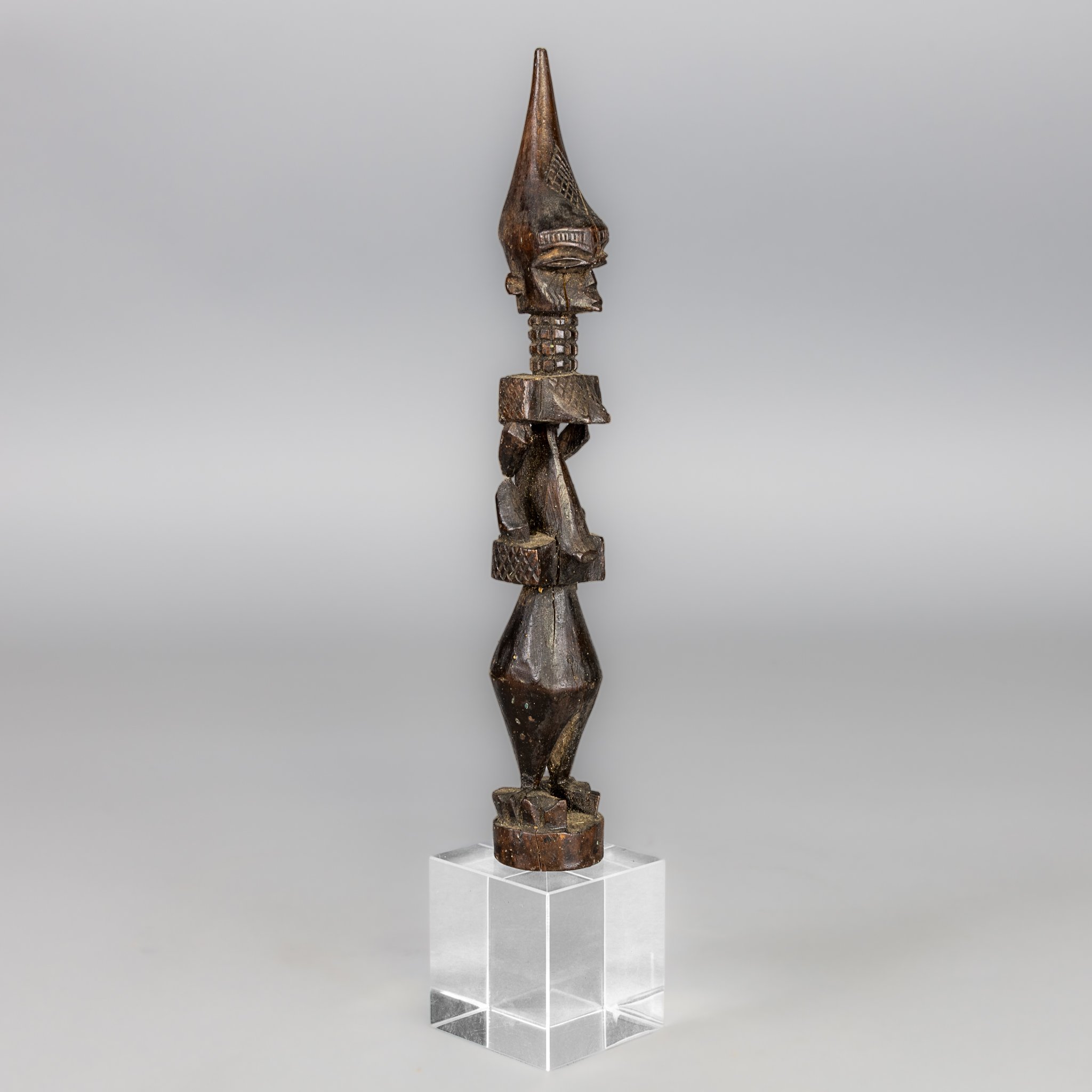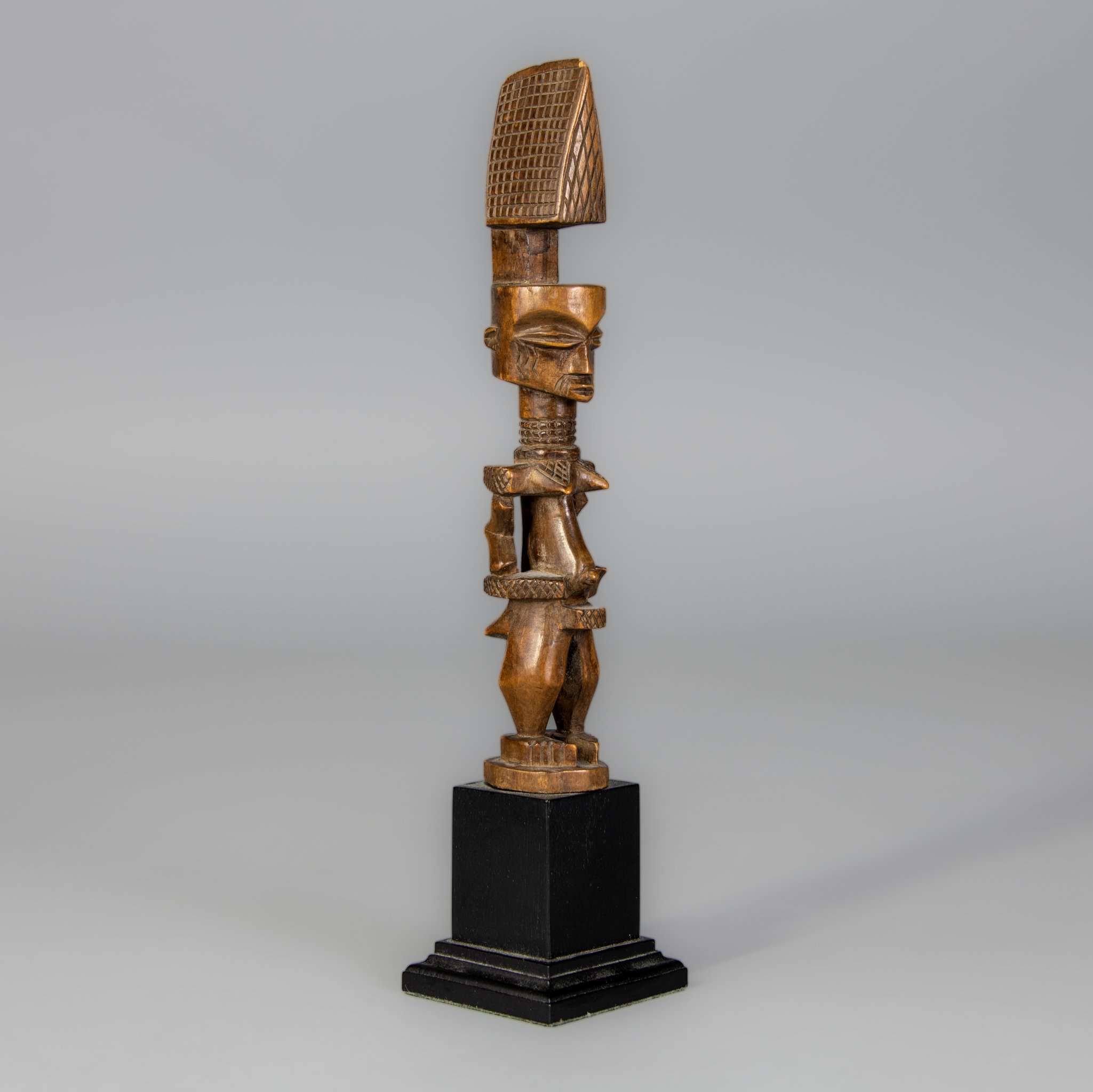

Lulua/Luluwa figures, D.R.C.
Figures like these three represent an interesting period in the history of African art, at least for me. They were carved by very skilled carvers most likely during the period of 1920-1940, but not carved for use within the culture, instead they were carved specifically to be sold to colonial officers and missionary workers. They are most likely carved in the likeness of figures carved for women in the bwanga bwa cibola cult, a social association or "cult" that addresses issues of human fertility.
In the case of these figures they are fairly stylized and cubist in nature compared to the often more realistic figures carved for use within the culture. The carvers had a certain level of additional artistic freedom when carving these figures that they might not have had when they carved figures for use within the culture. The same can be said by Songye altiers who carved very stylized and cubist forms of nkisi figures that were made for the same purpose. To me these figures represent and document an interesting time in African art history; they weren’t carved for use within the culture, but they also weren’t carved to deceive. To me they are authentic, non-traditional objects made for a specific audience which happens to be outsiders. These types of figures come up in various auctions, most recently in a Zemanek auction a nice example appeared in a little differnet style with an estimate on it of 5000 euros (link). If you browse through the Lulua figures in the AHDRC (African Heritage Documentation & Research Centre) database you’ll see several of these kinds of figures documented in the database, and if you look closely at some of the traditional figures you will see that there are some with a bit of the same stylization and cubism, which to me means that the traditional patrons possibly took a liking to the figures being made for sale to outsiders and wanted the carvers to incorporate some of the aesthetic into the objects being carved for them. It is just speculation on my part, but something I thought about while browsing the many examples.
A lot of African art “purists” don’t think figures like these have anything to do with traditional African art. I respect that opinion, but for me and many others that I know these figures are wonderful and I appreciate and respect them for what I see in them.
The 3 examples I am offering are each different from each other but share a few stylistic similarities. When you go to the pages for each of them (click on a photo to go to its page) you’ll find photos of them from every angle which show off their fantastic angles and lines. The prices I’m asking for each of them is fair in my opinion. If you’re interested in acquiring all 3 at once I will work with you on a discounted price.




